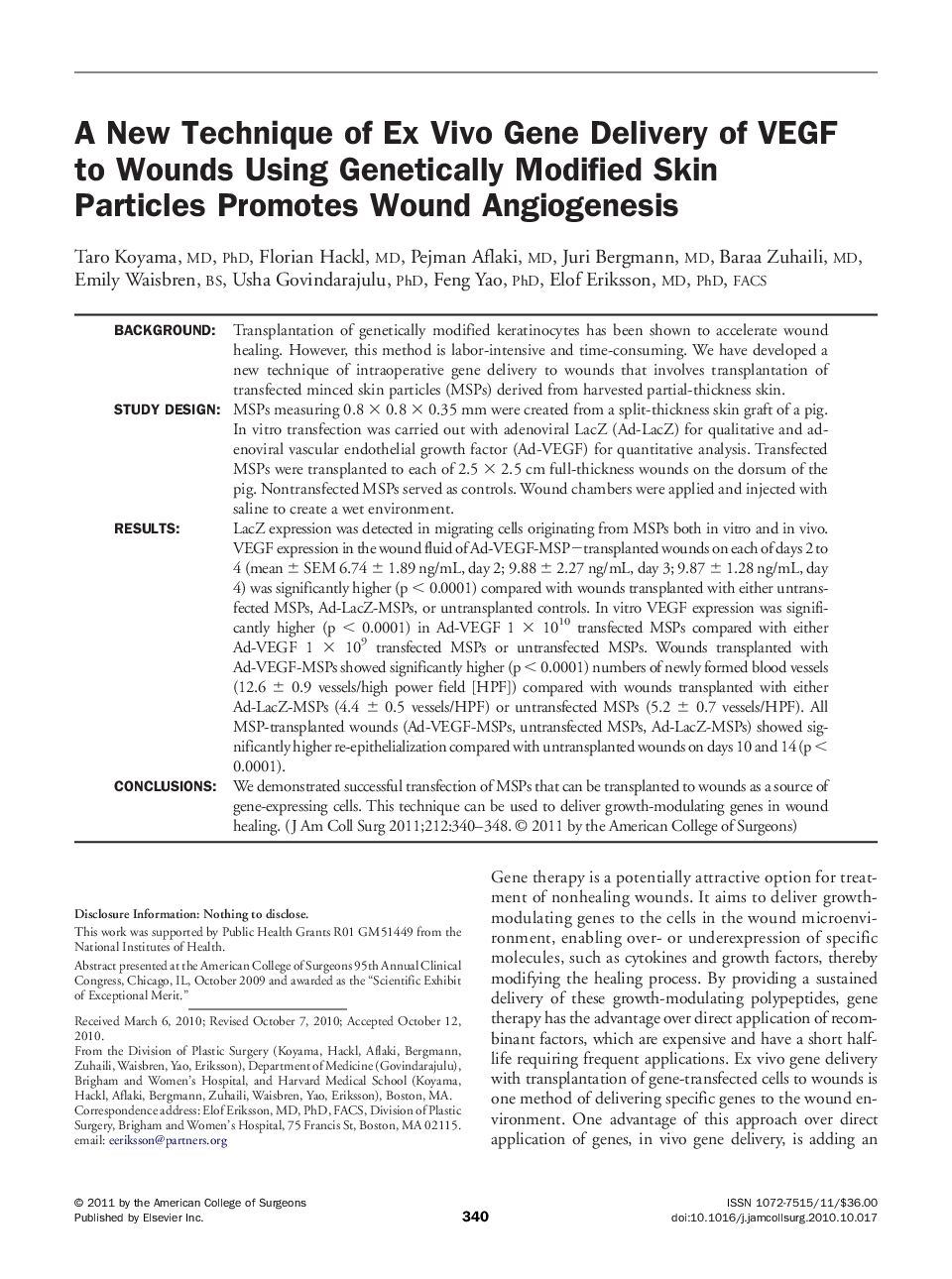| کد مقاله | کد نشریه | سال انتشار | مقاله انگلیسی | نسخه تمام متن |
|---|---|---|---|---|
| 4292332 | 1612275 | 2011 | 9 صفحه PDF | دانلود رایگان |

BackgroundTransplantation of genetically modified keratinocytes has been shown to accelerate wound healing. However, this method is labor-intensive and time-consuming. We have developed a new technique of intraoperative gene delivery to wounds that involves transplantation of transfected minced skin particles (MSPs) derived from harvested partial-thickness skin.Study DesignMSPs measuring 0.8 × 0.8 × 0.35 mm were created from a split-thickness skin graft of a pig. In vitro transfection was carried out with adenoviral LacZ (Ad-LacZ) for qualitative and adenoviral vascular endothelial growth factor (Ad-VEGF) for quantitative analysis. Transfected MSPs were transplanted to each of 2.5 × 2.5 cm full-thickness wounds on the dorsum of the pig. Nontransfected MSPs served as controls. Wound chambers were applied and injected with saline to create a wet environment.ResultsLacZ expression was detected in migrating cells originating from MSPs both in vitro and in vivo. VEGF expression in the wound fluid of Ad-VEGF-MSP−transplanted wounds on each of days 2 to 4 (mean ± SEM 6.74 ± 1.89 ng/mL, day 2; 9.88 ± 2.27 ng/mL, day 3; 9.87 ± 1.28 ng/mL, day 4) was significantly higher (p < 0.0001) compared with wounds transplanted with either untransfected MSPs, Ad-LacZ-MSPs, or untransplanted controls. In vitro VEGF expression was significantly higher (p < 0.0001) in Ad-VEGF 1 × 1010 transfected MSPs compared with either Ad-VEGF 1 × 109 transfected MSPs or untransfected MSPs. Wounds transplanted with Ad-VEGF-MSPs showed significantly higher (p < 0.0001) numbers of newly formed blood vessels (12.6 ± 0.9 vessels/high power field [HPF]) compared with wounds transplanted with either Ad-LacZ-MSPs (4.4 ± 0.5 vessels/HPF) or untransfected MSPs (5.2 ± 0.7 vessels/HPF). All MSP-transplanted wounds (Ad-VEGF-MSPs, untransfected MSPs, Ad-LacZ-MSPs) showed significantly higher re-epithelialization compared with untransplanted wounds on days 10 and 14 (p < 0.0001).ConclusionsWe demonstrated successful transfection of MSPs that can be transplanted to wounds as a source of gene-expressing cells. This technique can be used to deliver growth-modulating genes in wound healing.
Journal: Journal of the American College of Surgeons - Volume 212, Issue 3, March 2011, Pages 340–348